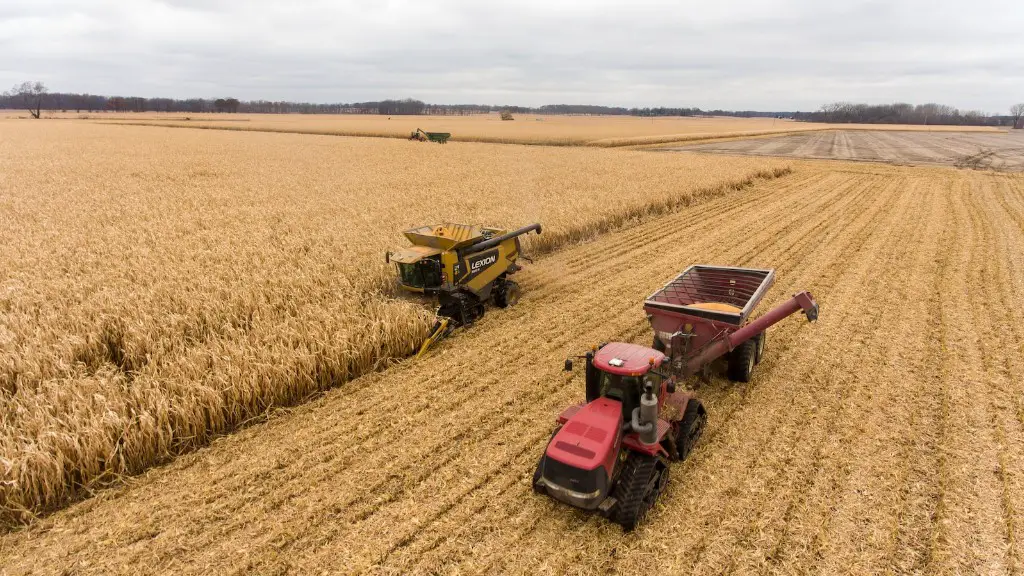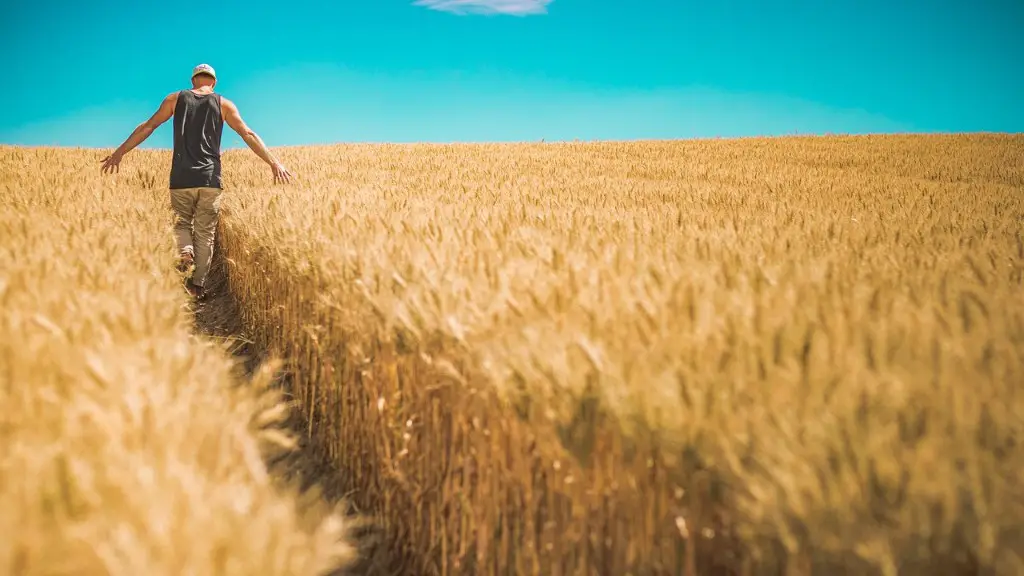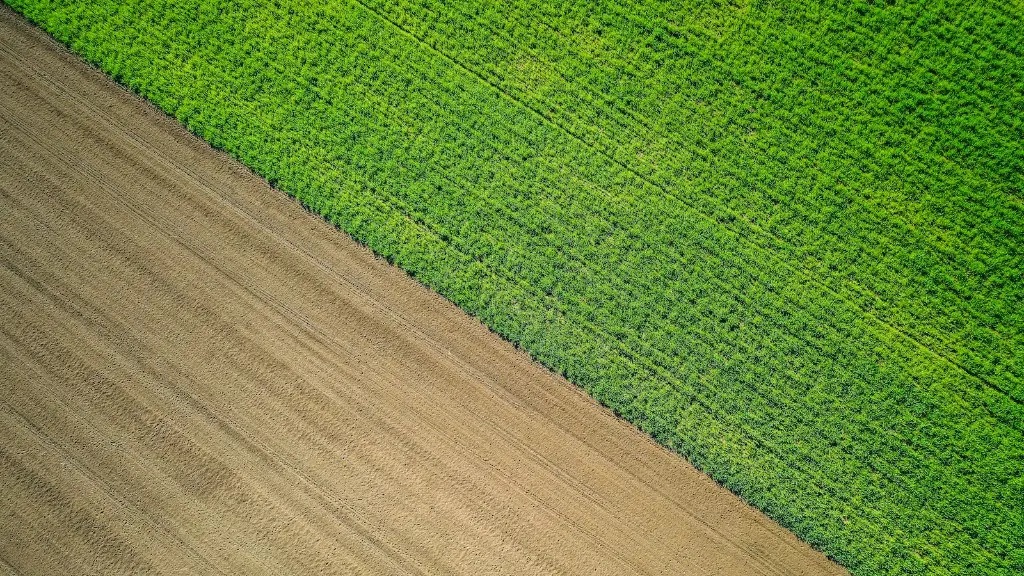When Did the Agriculture Start? Agriculture is a practice that has been a part of human development since ancient times. It first began in the Fertile Crescent, the region often referred to as the ‘Cradle of Civilization’ due to its location in West Asia between the Tigris and Euphrates rivers. As far back as 11000 BCE, humans had settled in and began farming the land in an area known as the Near East. This is where agriculture first began, although the exact date is unknown.
Agricultural revolution took place in 9500 BCE and brought about significant changes to the way humans lived and interacted with the environment. The invention of the plough offered a more efficient method of tilling the soil and provided better protection from predators. During the Neolithic period, people began to take up a more sedentary lifestyle, permanently settling in villages and utilizing domesticated animals such as goats, sheep, and cattle. As the population increased and needs changed, farming practices also evolved.
The rise of farming during the Neolithic period brought about many changes in terms of food production. People began to rely on staple crops, such as wheat and barley, for sustenance. Crops were also diversified, allowing for a greater variety of foods to be produced and consumed. Additionally, tools and materials like pottery were also developed and used to help with storing and preparing food.
Farming offered many advantages to those who practiced it. For example, it enabled more reliable food production, allowed for a more stable income, and encouraged a sense of community and security. Additionally, people began to specialize in different areas, such as animal breeding, which allowed for greater specialization and efficiency.
Agriculture has played an important role in human development since ancient times. It has allowed for more efficient food production and a more sedentary lifestyle. Additionally, it has also helped to increase population numbers and supported the rise of cities and civilizations. As such, it is no surprise that the practice of agriculture has been the cornerstone of human development for centuries.
Wheat and Barley
Wheat and barley are considered to be two of the first domesticated crops, having been used throughout the Fertile Crescent during the Neolithic period. The use of these crops allowed people to specialize and they became the foundation of staple foods, as they could be stored and prepared in a variety of ways. Additionally, the grains could be milled to make flour or barley porridge, and used to create a variety of products such as beer, bread and wine.
The early use of wheat and barley helped to form the basis for more advanced agricultural practices. As the population increased, so too did the demand for more efficient food production. In order to meet this demand, farmers developed new strains of wheat and barley – these had larger seeds, were easier to harvest, and were more resistant to drought and diseases. Additionally, the grains were more suited to the environment, meaning production was more reliable, and yield was higher. These advances allowed for a large increase in food production and helped to support the growth of cities and civilizations.
In addition to increasing the yield of food, wheat and barley played an important role in nutrition. People began to understand the nutritional value of these grains and started to process them further – this allowed for the production of more nutrient-rich foods such as bread, beer, and wine. It is estimated that the increased production of these grains provided approximately 70% of the average person’s caloric intake during the Neolithic era.
Wheat and barley have been an integral part of human development since the Neolithic period. The rise of these grains helped to increase the yield of food, making it easier for people to secure their sustenance. Additionally, it led to further processing and the production of more nutritious and varied foods which helped to support the development of cities and civilizations.
Animal Breeding
Animal breeding has been a significant part of agriculture since the Neolithic period. This practice allowed for the domestication of animals and the formation of herds, which provided a variety of advantages for farmers. Herds helped to ensure more consistent food production as they offered a reliable source of meat, milk, and other products. Animals were also used to pull ploughs and to transport goods, while their hides and wool could be used to make tools, clothing, and other items.
As human populations increased, so too did the demand for more efficient animal breeding. In order to meet this demand, farmers began to divide animals into different breeds, selecting those with desirable traits such as size or temperament. This enabled them to produce specific goods, such as milk or wool, which could be tailored to the needs of their consumers. Additionally, selective breeding allowed farmers to create animals that were hardier and more resistant to disease, meaning they could survive in harsher climates and required less care.
Animal breeding has been a key component of human development since the Neolithic period. It has enabled more efficient food production, as well as a greater variety of goods. By selecting animals with desirable traits, farmers have been able to produce goods more efficiently and reliably, helping to support the rise of cities and civilizations.
Today, animal breeding is still practiced and just as important as it was in ancient times. Innovative approaches have been developed, such as the use of technology to track and assess animals, which has enabled farmers to produce animals with more desirable traits and characteristics. These advances have not only helped to ensure more efficient animal production, but have also had a positive impact on the environment by reducing the need for artificial inputs such as herbicides and pesticides.
Tools and Materials
Tools and materials have been essential for farming since the Neolithic period. The invention of the plough, for example, enabled farmers to till the soil with greater efficiency, meaning more food could be produced in the same amount of time. Other tools, such as sickles and threshers, were used to harvest crops and process them, while materials like pottery allowed for the storage and preservation of food.
The invention of tools and materials allowed people to work more efficiently and provided new opportunities for farmers. For example, pottery enabled farmers to store food for longer periods of time and made it easier to transport goods. Additionally, tools such as the plough and thresher helped to make farming less labour-intensive and more efficient, which allowed farmers to increase their yield and maximize their profits.
Today, tools and materials are still an important part of farming. Examples include irrigation systems, which are used to conserve water and improve crop yields, and fertilizers, which are used to replenish soils and increase crop yields. Additionally, advances in technology such as precision farming and soil sensors have allowed farmers to monitor and optimize their crops, ensuring higher yields and better quality products.
Tools and materials have been integral to farming since the Neolithic period. The invention of the plough, pottery, and other tools enabled farmers to work more efficiently, while materials like fertilizer allowed for higher crop yields. Today, these tools and materials remain essential for modern agricultural practices, ensuring more efficient farming and higher yields of food.
Development of Cities and Civilizations
The development of cities and civilizations has been largely supported by agriculture since the Neolithic period. The rise of agriculture allowed people to settle in permanent villages, which increased the population and enabled cities to form. This in turn allowed for the development of a variety of cultural, economic, and political systems, as well as the development of trade and technology.
The increased production of staple crops, such as wheat and barley, provided a reliable food source, allowing people to spend less time ensuring sustenance and more time engaging in activities such as trade, education and the arts. Additionally, the increased use of techniques such as animal breeding, irrigation and fertilisation enabled a large increase in food production, making it possible for cities and civilizations to sustain larger populations.
Agriculture has been essential for the development of cities and civilizations since ancient times. It has provided a reliable and plentiful food source, allowing people to focus their energies on other activities. Additionally, advances in agricultural techniques have enabled more efficient and higher yields of food, which has helped to support the growth of cities and civilizations.
Today, agriculture remains a key part of worldwide development. The world’s population is ever increasing, and agriculture continues to be the cornerstone of food production, providing sustenance and allowing people to lead better lives. Additionally, advances in technology have enabled more efficient farming, enabling higher yields and less wastage. As such, it is clear that agriculture will continue to play a major role in the development of the world’s cities and civilizations.





